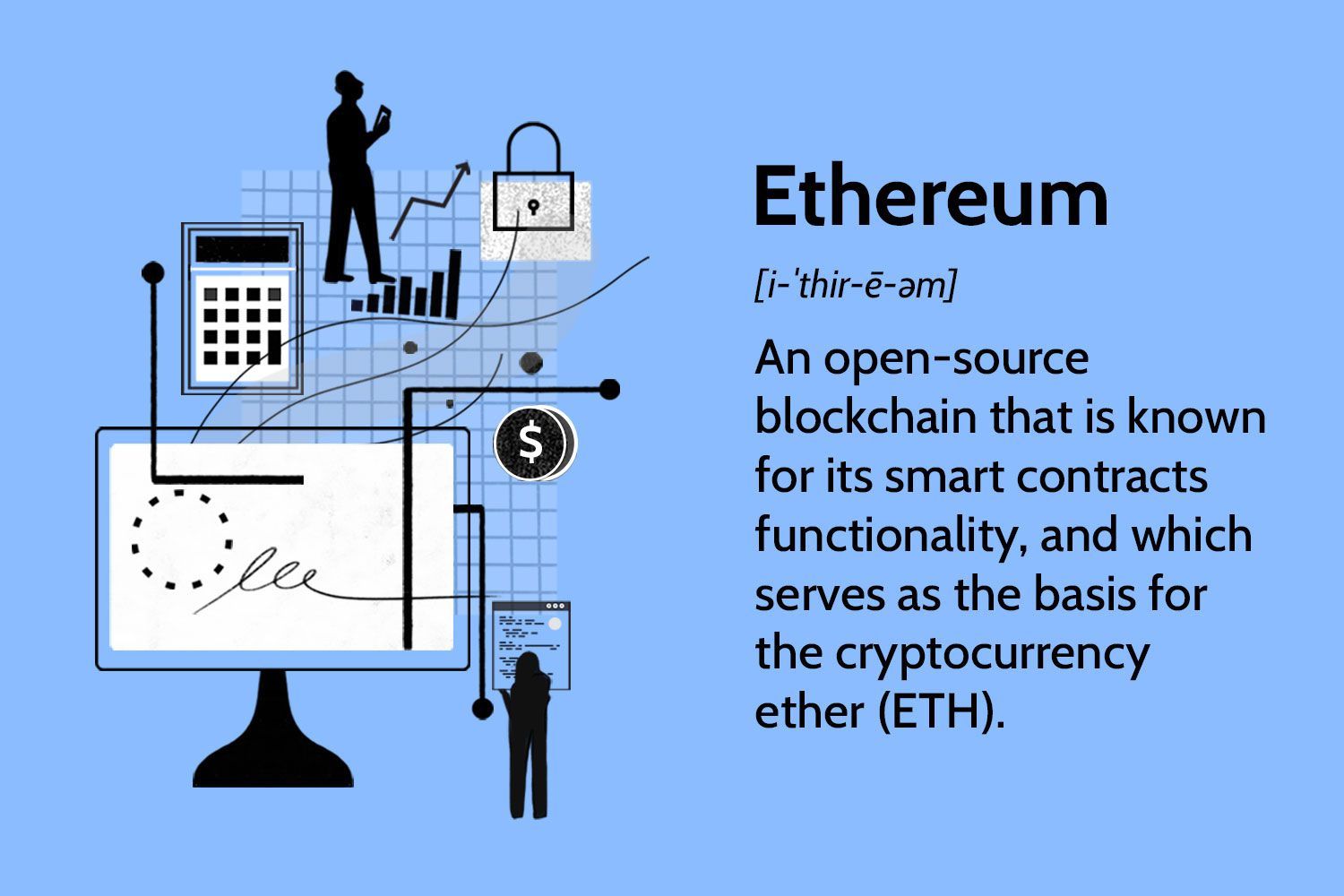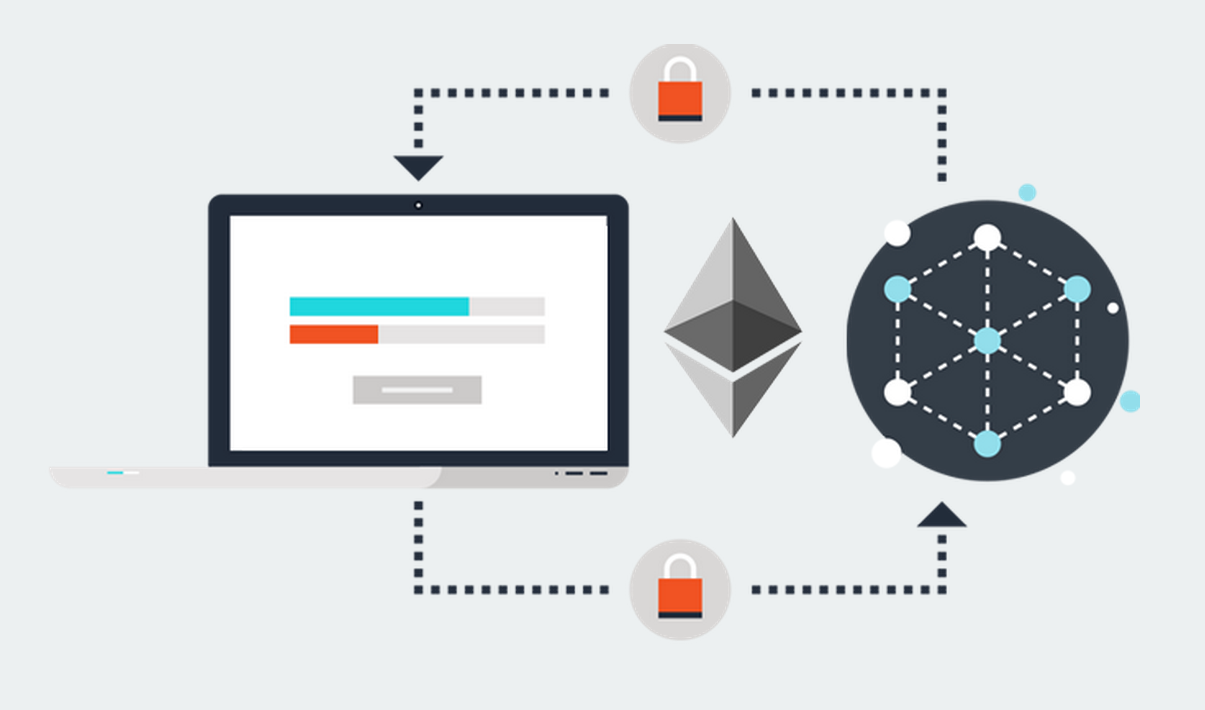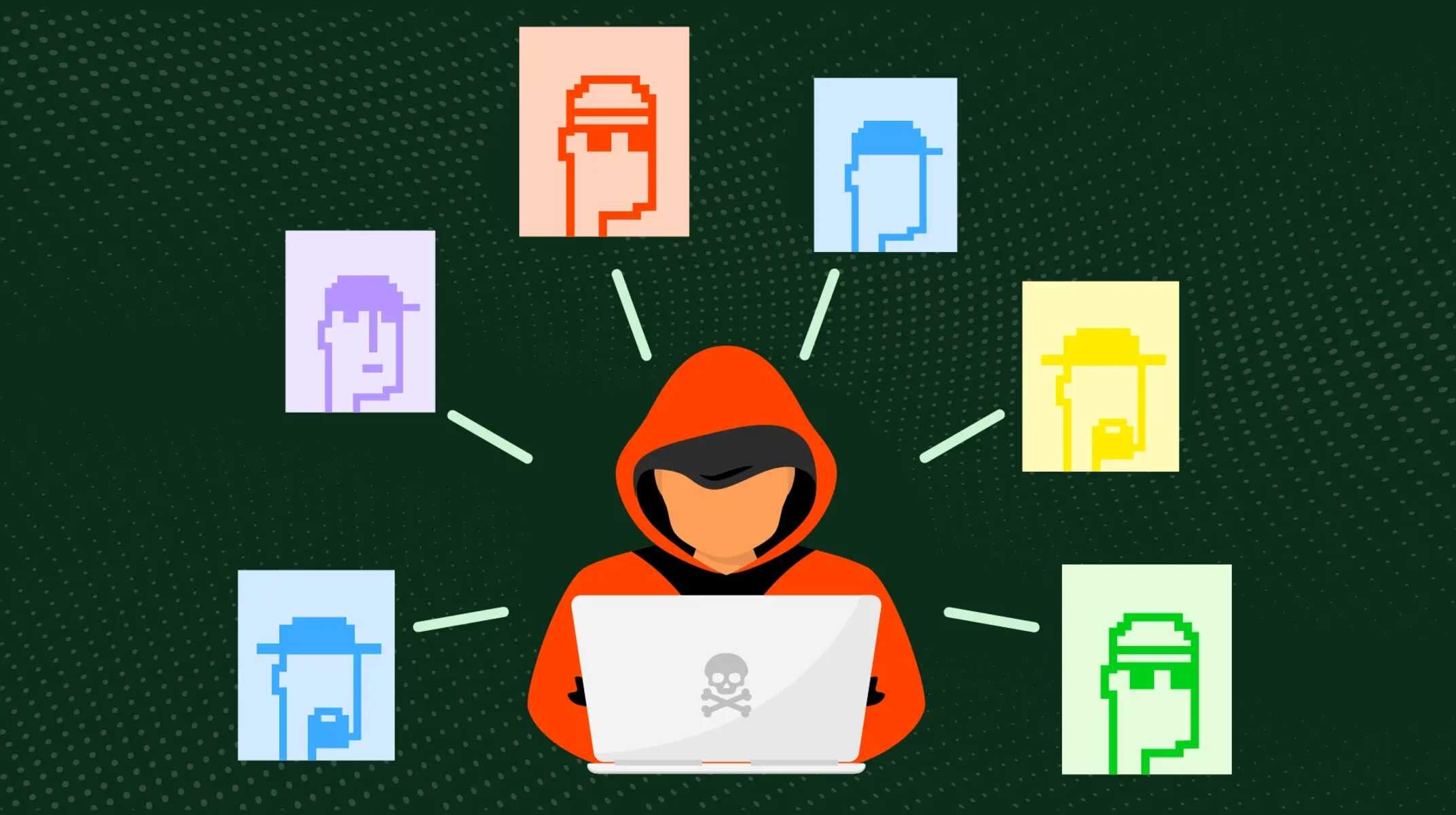What is Blockchain?
Blockchain is a distributed ledger technology that allows multiple parties to maintain a decentralized and transparent record of transactions. It is often associated with cryptocurrencies like Bitcoin, but its potential applications go far beyond digital currencies.
At its core, blockchain is a sequential chain of blocks, each containing a list of transactions. These blocks are linked together using cryptographic hashes, creating an immutable and tamper-proof record. Unlike traditional centralized systems, where a single authority controls the ledger, the blockchain is distributed among multiple participants, known as nodes, who collectively validate and update the ledger.
One of the key features of blockchain is its ability to eliminate the need for intermediaries. By cutting out middlemen, blockchain enables peer-to-peer transactions, reducing costs, and increasing efficiency. Furthermore, because the ledger is transparent and visible to all participants, it promotes trust and accountability.
Another important aspect of blockchain is its consensus mechanism. In order to add a new block to the chain, nodes must agree on its validity through a process called consensus. The most common consensus algorithm is Proof of Work (PoW), used by Bitcoin, where nodes solve complex mathematical puzzles to validate transactions. However, other consensus mechanisms like Proof of Stake (PoS) and Delegated Proof of Stake (DPoS) have emerged, offering alternatives that are faster and less energy-intensive.
Blockchain technology has the potential to revolutionize various industries by providing a secure and efficient way to record and verify transactions. From financial services and supply chain management to healthcare and voting systems, the applications of blockchain are vast and diverse.
In the next sections, we will explore how blockchain works, why it is considered secure, its impact on traditional financial institutions, and the challenges it faces for widespread adoption.
How Does Blockchain Work?
Blockchain technology works by creating a decentralized network of computers, known as nodes, that collectively maintain and update a shared ledger. This ledger, also called the blockchain, contains a record of all transactions ever made on the network.
When a transaction is initiated, it is broadcasted to the entire network. The nodes validate the transaction and bundle it together with other validated transactions into a block. Each block contains a unique identifier, a timestamp, and a reference to the previous block, creating a chain of blocks.
In order to add a new block to the chain, the nodes must agree on its validity. This is achieved through a consensus mechanism, whereby the nodes reach a consensus on the order and content of transactions. The most common consensus mechanism is Proof of Work (PoW), where nodes use significant computational power to solve complex mathematical problems. The first node to solve the problem gets the right to add a new block to the chain, along with a reward in the form of cryptocurrency.
Once a block is added to the chain, it is extremely difficult to alter or remove. Each block contains a hash, which is a unique identifier generated based on the contents of the block. Any change in the block’s data would result in a different hash value. Since each block also references the previous block’s hash, any tampering with a block would involve changing the hash of subsequent blocks as well, making the alteration detectable.
Additionally, the blockchain’s distributed nature provides an extra layer of security. In a decentralized network, an attacker would need to gain control of a majority of the nodes to tamper with the blockchain. This makes the blockchain highly resistant to hacking and fraud.
In summary, blockchain works by creating a decentralized and transparent ledger that relies on consensus among nodes to validate and add transactions to the chain. Its use of cryptographic hashes and distributed network ensures the integrity and security of the data stored on the blockchain.
What Makes Blockchain Secure?
Blockchain technology is considered secure due to a combination of cryptographic techniques, decentralized consensus, and immutability.
One of the key security features of blockchain is its use of cryptographic algorithms. Transactions recorded on the blockchain are encrypted using cryptographic techniques, making it extremely difficult for unauthorized users to access or modify the data. Each block in the blockchain contains a hash, which is a unique string of characters generated based on the contents of the block. Any slight change to the data in a block would result in a different hash, alerting the network to potential tampering.
Another aspect that ensures the security of blockchain is its decentralized nature. Traditional centralized systems rely on a single point of failure, making them vulnerable to hacking or corruption. In a blockchain network, the ledger is distributed among multiple nodes. For a malicious actor to compromise the blockchain, they would need to control a majority of the nodes, which is highly unlikely and resource-intensive. The distributed nature of blockchain also protects against data loss, as the information is replicated across multiple nodes.
Consensus mechanisms play a crucial role in maintaining the security of the blockchain. Through consensus, nodes in the network agree on the order and content of transactions. The most commonly used consensus mechanism, Proof of Work (PoW), requires nodes to solve complex mathematical puzzles to validate and add new blocks to the chain. This process ensures that only valid transactions are accepted and added to the blockchain, preventing malicious actors from exploiting the network.
Immutability is another fundamental aspect of blockchain security. Once a transaction is recorded on the blockchain and added to a block, it becomes nearly impossible to alter or remove. The blocks in the chain are linked together through the use of cryptographic hashes, making it computationally infeasible to alter a single block without affecting the entire chain. This immutability feature provides trust and transparency to participants on the blockchain, as they can rely on the integrity of the recorded data.
In summary, blockchain technology is secure due to the combination of cryptographic techniques, decentralized consensus, and immutability. The use of encryption, distributed ledger, consensus mechanisms, and immutability ensures the integrity, transparency, and resistance to tampering, making blockchain a highly secure technology.
Can Bitcoin and Blockchain be Separated?
Bitcoin and blockchain are often used interchangeably, but they are not the same thing. Bitcoin is a cryptocurrency that operates on a blockchain, which is the underlying technology that enables its functionality. However, it is possible to separate the two.
Blockchain technology can exist independently of Bitcoin or any other cryptocurrency. In fact, blockchain has a wide range of potential applications beyond digital currencies. It can be used as a secure and transparent ledger for various industries, such as supply chain management, healthcare, voting systems, and more.
On the other hand, Bitcoin relies on blockchain technology for its operation. It uses the blockchain to record and verify transactions, create new coins through mining, and maintain the decentralized network. Without blockchain, Bitcoin would not be able to function as a decentralized and transparent digital currency.
While Bitcoin and blockchain are conceptually linked, they serve different purposes. Blockchain provides the underlying infrastructure for secure and decentralized transactions, whereas Bitcoin is a specific application that utilizes this infrastructure. It is possible to have blockchain technology without Bitcoin, but it is not possible to have Bitcoin without blockchain.
Furthermore, blockchain technology has evolved to support various types of cryptocurrencies and tokens, not just Bitcoin. There are now numerous blockchain platforms and protocols that offer different functionalities and features. Examples include Ethereum, Ripple, and Litecoin, each with its own unique blockchain implementation and use cases.
Separating Bitcoin from blockchain opens up a world of possibilities for the adoption and advancement of blockchain technology. Organizations and industries can explore the benefits of blockchain for their specific needs without the association and limitations of a specific cryptocurrency. This allows for greater flexibility, innovation, and customization in implementing blockchain solutions.
In summary, while Bitcoin and blockchain are closely linked, they can be separated. Blockchain technology can be applied to various industries and use cases beyond cryptocurrencies like Bitcoin. Understanding this distinction is crucial for grasping the full potential and versatility of blockchain technology.
How does Blockchain Impact Traditional Financial Institutions?
Blockchain has the potential to significantly impact traditional financial institutions by revolutionizing various aspects of their operations and the way financial transactions are conducted.
One of the main impacts of blockchain on traditional financial institutions is the potential for increased efficiency. Traditional financial systems often involve intermediaries, complex processes, and lengthy settlement times. With blockchain, transactions can be executed directly between parties without the need for intermediaries, reducing costs and processing times. The use of smart contracts, which are self-executing contracts stored on the blockchain, further automates and streamlines financial transactions.
Blockchain also enhances transparency and trust within the financial system. The distributed and immutable nature of the blockchain allows for real-time visibility of transactions, reducing the risk of fraud or manipulation. Financial institutions can leverage blockchain to create transparent audit trails and enhance regulatory compliance.
Another significant impact of blockchain on financial institutions is its potential to democratize financial services. With blockchain, individuals who are unbanked or underserved by traditional financial institutions can access financial services directly through decentralized platforms. This enables greater financial inclusion and empowers individuals to take control of their financial lives.
In addition, blockchain technology enables faster cross-border transactions and reduces the need for multiple intermediaries. Traditional cross-border payments can be time-consuming and costly due to the involvement of correspondent banks. Blockchain-based solutions can provide faster and more cost-effective international transactions by eliminating the need for multiple intermediaries and leveraging the efficiency of decentralized networks.
Furthermore, blockchain can enhance the security and privacy of transactions in traditional financial institutions. The use of cryptographic techniques ensures secure and tamper-proof storage of sensitive financial data. Additionally, blockchain can offer greater control over personal data, allowing users to share only necessary information while maintaining their privacy.
However, the integration of blockchain into traditional financial institutions is not without challenges. Scalability, regulatory compliance, interoperability with existing systems, and the need for standardization are some of the hurdles that need to be overcome for widespread adoption. Nonetheless, financial institutions are actively exploring and investing in blockchain solutions to unlock its potential benefits.
In summary, blockchain technology has the potential to significantly impact traditional financial institutions by increasing efficiency, transparency, trust, financial inclusion, and security. While there are challenges to overcome, the adoption of blockchain-based solutions in the financial sector is gaining momentum and has the potential to reshape the future of finance.
What are the Limitations of Blockchain?
While blockchain technology offers numerous benefits, it also has its limitations that need to be considered when implementing and utilizing this technology.
One of the main limitations is scalability. As the size of the blockchain grows with each new block added to the chain, the storage and processing requirements increase. This can result in slower transaction speeds and increased costs. Scaling a blockchain network to handle a large volume of transactions without compromising security and decentralization remains a challenge.
Another limitation is energy consumption. Proof of Work (PoW) consensus algorithms, such as the one used by Bitcoin, require significant computational power, resulting in high energy consumption. The mining process can be resource-intensive and environmentally unsustainable. While alternative consensus mechanisms like Proof of Stake (PoS) offer energy-efficient alternatives, widespread adoption of these mechanisms is still needed.
Blockchain also faces interoperability challenges. The lack of standardization and compatibility between different blockchain platforms and protocols makes it difficult to exchange data or value seamlessly across different networks. Interoperability standards and protocols need to be developed to enable efficient communication and collaboration between blockchain networks.
Privacy is another concern with blockchain technology. While transactions on the blockchain are transparent and traceable, privacy may be compromised when personal information is linked to public addresses. Solutions that ensure privacy without sacrificing the integrity and transparency of the blockchain are being explored, such as zero-knowledge proofs and privacy-focused cryptocurrencies.
Furthermore, regulatory challenges exist in the adoption of blockchain technology. The decentralized and borderless nature of blockchain makes it challenging for traditional regulatory frameworks to keep pace. Issues related to data privacy, identity management, and anti-money laundering regulations need to be addressed to enable widespread adoption and integration of blockchain in various industries.
Lastly, human error and vulnerabilities in smart contracts pose risks. Smart contracts are self-executing contracts stored on the blockchain, but they are only as secure as the code written. If there are bugs or vulnerabilities in the code, it can lead to unintended consequences. Code review, auditing, and advanced security measures are necessary to mitigate these risks.
In summary, while blockchain technology offers many advantages, it also has limitations regarding scalability, energy consumption, interoperability, privacy, regulatory challenges, and potential vulnerabilities in smart contracts. Addressing these limitations and finding innovative solutions is essential for maximizing the potential of blockchain technology and ensuring its successful integration into various industries and applications.
How is Blockchain Being Used Outside of Finance?
Although blockchain technology is often associated with cryptocurrencies and financial transactions, its potential applications extend well beyond the realm of finance. Various industries are exploring and leveraging blockchain’s unique features to address challenges and revolutionize their operations.
One prominent use case of blockchain outside of finance is supply chain management. Blockchain enables transparent and traceable tracking of goods as they move through the supply chain. Companies can use blockchain to record and verify each step of the supply chain, reducing fraud, counterfeiting, and ensuring the authenticity of products. Additionally, blockchain-based supply chain systems can enhance efficiency, reduce paperwork, and improve trust between stakeholders.
Blockchain also shows promise in the healthcare industry. Electronic health records (EHRs) can be securely stored on the blockchain, providing a single source of truth and allowing patients to have greater control over their medical data. Blockchain-based systems can improve data interoperability, enhance privacy and security, streamline insurance claim processing, and enable secure sharing of medical research and clinical trial data.
Another emerging area for blockchain application is in voting systems. Blockchain can provide secure and transparent voting platforms, eliminating concerns related to voter fraud and tampering. By recording each vote on the blockchain, the integrity of the election process can be ensured. With blockchain-based voting systems, audits and recounts become more streamlined and trustworthy.
The real estate industry is also exploring blockchain for property title management. Blockchain can provide a decentralized and immutable ledger for recording and verifying property ownership, reducing the risk of fraud and disputes. Smart contracts can automate processes such as property transfers and rental agreements, streamlining transactions and reducing administrative costs.
Blockchain is being used in the energy sector as well, enabling peer-to-peer energy trading and decentralized energy systems. With blockchain, energy producers can directly sell excess energy to consumers, bypassing traditional utility companies. Smart contracts on the blockchain facilitate secure and automated energy transactions, fostering a greener and more efficient energy ecosystem.
Outside of these industries, blockchain is being explored in areas such as intellectual property, identity management, supply chain finance, charity and philanthropy, and more. The immutable and transparent nature of blockchain technology provides opportunities for improved trust, increased efficiency, and enhanced security in various sectors.
While blockchain adoption outside of finance is still in its early stages, the potential for disruption and innovation is significant. However, challenges related to scalability, regulatory frameworks, and interoperability need to be addressed for widespread adoption of blockchain across different industries.
In summary, blockchain technology has the potential to transform various industries beyond finance. From supply chain management and healthcare to voting systems and real estate, blockchain offers benefits such as increased transparency, enhanced security, improved efficiency, and reduced fraud. Continued exploration and innovation in applying blockchain outside of finance will shape the future of these industries.
How Does Blockchain Impact Data Privacy and Security?
Blockchain technology has a significant impact on data privacy and security, offering new approaches to protecting sensitive information in a decentralized and transparent manner.
One of the key ways in which blockchain enhances data privacy and security is through the use of cryptographic techniques. Blockchain uses advanced cryptographic algorithms to secure transactions and data stored on the network. Each transaction recorded on the blockchain is encrypted and linked to a unique identifier, making it extremely difficult for unauthorized individuals to access or tamper with the data. This cryptographic encryption ensures that sensitive information is protected and remains confidential.
The decentralized nature of blockchain also plays a crucial role in enhancing data privacy and security. Traditional centralized systems store data in a single location or server, making them vulnerable to hacking and data breaches. In contrast, blockchain distributes data across multiple nodes in the network. For an attacker to compromise the data, they would need to gain control of a majority of the nodes, which is highly unlikely and resource-intensive. This decentralized architecture provides a higher level of security, as there is no single point of failure or vulnerability.
Blockchain’s transparency contributes to data security, albeit in a different way. While blockchain transactions are transparent and visible to all participants, the actual user identities remain pseudonymous, as transactions are recorded using unique cryptographic addresses rather than real-world identities. This allows for transparency and accountability without compromising personal privacy. Additionally, the transparency of blockchain enables participants to verify the integrity of the data and track the entire history of transactions, which reduces the risk of fraud and ensures the legitimacy of the recorded information.
Furthermore, blockchain technology empowers individuals to have greater control over their personal data. With blockchain-based identity management systems, individuals can securely store and manage their digital identities, granting access to select entities on a need-to-know basis. This minimizes the reliance on centralized databases that hold vast amounts of personal information, reducing the likelihood of data breaches and identity theft.
While blockchain technology provides enhanced data privacy and security, it is not without its challenges. For example, blockchain’s immutability can make it difficult to remove or modify incorrect or outdated data. Additionally, the pseudonymous nature of blockchain transactions can potentially hinder compliance with certain regulations that require real-world identification. These challenges require ongoing research and development to strike the right balance between privacy, security, and regulatory requirements.
In summary, blockchain technology significantly impacts data privacy and security by leveraging cryptographic techniques, decentralized architecture, transparency, and individual control over personal data. By providing a secure and transparent framework, blockchain enhances trust and reduces the vulnerabilities associated with traditional centralized systems.
What are the Challenges to Widespread Adoption of Blockchain?
While blockchain technology holds immense promise, there are several challenges that hinder its widespread adoption across various industries.
Scalability is one of the primary challenges facing blockchain. As the size of the blockchain grows with each new block added to the chain, the storage and processing requirements increase. This can result in slower transaction speeds and increased costs. Scaling a blockchain network to handle a large volume of transactions without compromising security and decentralization remains a complex task.
Another challenge is the energy consumption associated with certain consensus mechanisms, particularly Proof of Work (PoW). Mining cryptocurrencies that use PoW requires significant computational power, leading to high energy consumption and carbon emissions. The environmental impact of blockchain poses concerns and necessitates the exploration and implementation of more energy-efficient consensus mechanisms.
Regulatory frameworks and compliance pose significant challenges for widespread adoption of blockchain. The decentralized and borderless nature of blockchain makes it challenging to adhere to existing regulatory frameworks, which often involve centralized authorities. Developing regulatory clarity and creating frameworks that strike a balance between innovation and consumer protection are crucial for wider blockchain adoption.
Interoperability and compatibility between different blockchain platforms and protocols are also obstacles to widespread adoption. The lack of standardized protocols and communication mechanisms hinders the seamless exchange of data and value across different blockchain networks. Efforts in developing interoperability standards and frameworks are necessary to foster collaboration and foster a more interconnected blockchain ecosystem.
Furthermore, the user experience and interface of blockchain applications need improvement to attract mainstream adoption. User-friendly interfaces, intuitive design, and seamless integration with existing systems are essential factors to encourage users and businesses to embrace blockchain technology. Simplifying complex blockchain processes and providing user-friendly tools and applications are crucial in making blockchain more accessible to non-technical users.
Security concerns also present challenges to the widespread adoption of blockchain. While blockchain itself is designed to be secure, there have been instances of vulnerabilities in smart contracts and blockchain platforms. Conducting thorough code audits, implementing robust security measures, and raising awareness about best practices are necessary to mitigate these risks and enhance overall security in blockchain systems.
In summary, the challenges to widespread blockchain adoption include scalability, energy consumption, regulatory frameworks, interoperability, user experience, and security concerns. Addressing these challenges requires continuous technological advancements, collaboration between industry stakeholders, and the establishment of appropriate standards and regulations to create a more sustainable and user-friendly blockchain ecosystem.
Conclusion
Blockchain technology has emerged as a transformative force with the potential to revolutionize various industries beyond finance. Its decentralized and transparent nature, coupled with advanced cryptographic techniques, offers increased efficiency, improved security, enhanced privacy, and greater trust among participants.
From its origins as the underlying technology behind cryptocurrencies like Bitcoin, blockchain has evolved to find applications in supply chain management, healthcare, voting systems, real estate, energy, and more. These industries are exploring the benefits of blockchain technology, leveraging its features to streamline processes, increase transparency, reduce fraud, and empower individuals with greater control over their data.
While blockchain holds immense potential and offers numerous advantages, there are challenges to overcome for its widespread adoption. Scalability, energy consumption, regulatory frameworks, interoperability, user experience, and security concerns pose obstacles that need to be addressed through ongoing research, innovation, collaboration, and regulatory clarity.
As blockchain technology continues to develop, it is important to strike a balance between embracing the benefits it offers and addressing the challenges it presents. Governments, industries, and technology experts need to collaborate to create supportive frameworks, encourage innovation, and develop interoperable solutions that unleash the full potential of blockchain technology.
In conclusion, blockchain technology has the power to transform industries, disrupt traditional systems, and drive innovation. By harnessing its capabilities and addressing its limitations, blockchain has the potential to reshape the way we transact, communicate, and interact in the digital age.

























